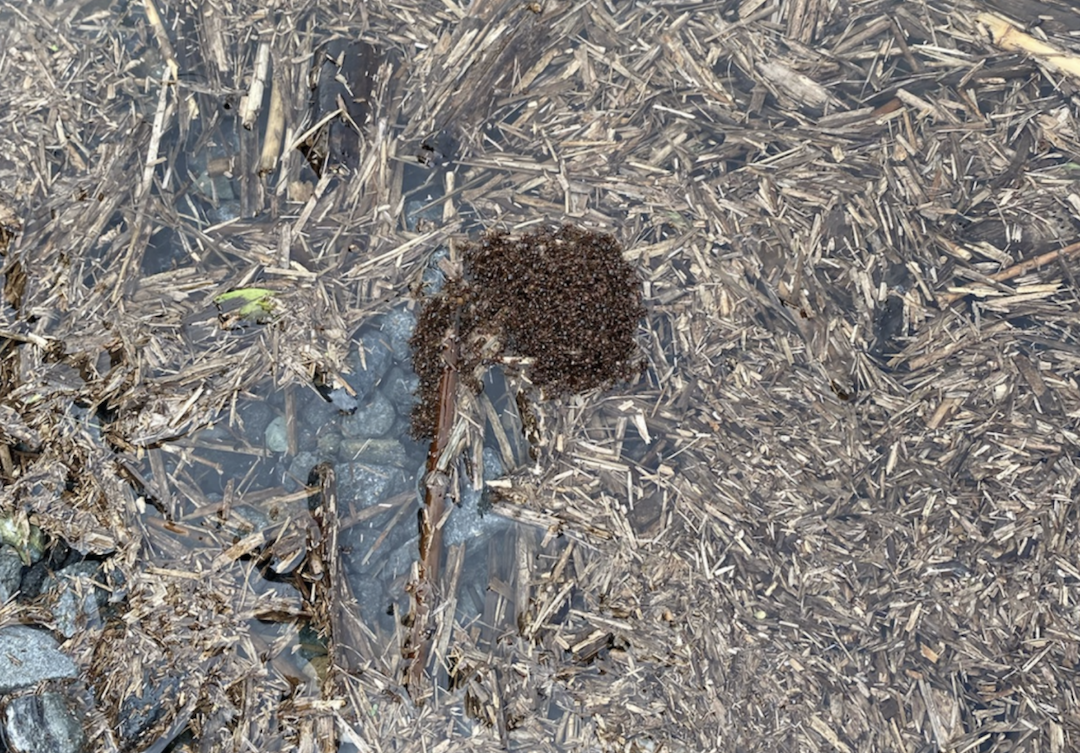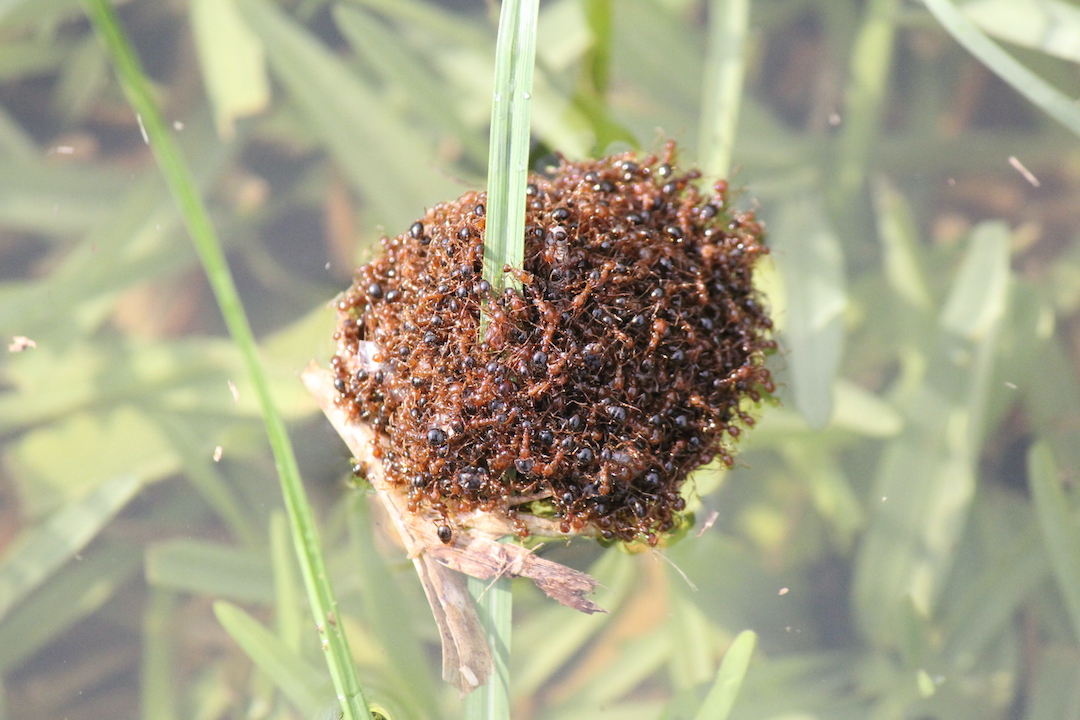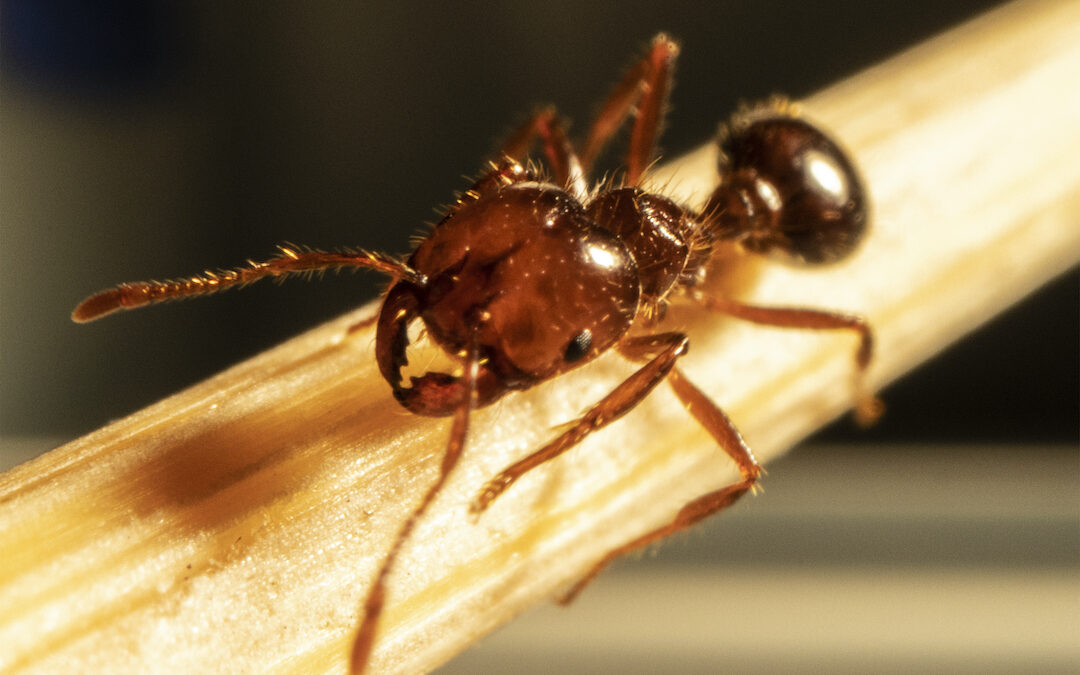Red Fire Ants are forming rafts to travel across flood waters in Queensland.
After a Queensland farmer posted a video of invasive fire ants building floating rafts, many are fearful that these pests will travel to new regions and destroy precious resources. Now, experts are warning that the unpredictable weather could accelerate the spread of this deadly species.
Over the last few weeks, Queensland has been subject to torrential rain and heavy flooding, brought about by tropical cyclone Jasper. Beyond the devastation caused to properties and roads, many are also concerned about the sightings of red fire ants using the floodwater to guide them to new locations.

Red Invasive Fire Ants © Barry Rice
In a warning released by the Invasive Species Council, Advocacy Manager Reece Pinata emphasised the need to stay vigilant.
“Fire ants are more active before or after rainfall and can form large floating rafts which move with water currents to establish footholds in new areas,” he explains.
“We have recently seen evidence of this rafting behaviour on cane farms south of Brisbane.”
During long periods of flooding, fire ants can link their legs together to form a raft and protect the queen. This phenomenon has long fascinated scientists, who have found that the rafts exhibit unique material properties. According to one study from the Georgia Institute of Technology, the ants build their rafts by using all six of their legs to attach themselves to others in their colony. This means that each ant could have up to 20 friends gripping onto its body.
“’It turns out that 99% of the legs are connected to another ant and there are no freeloaders’” says David Hu, who worked on the Georgia Institute study.
By connecting using their legs, the ants can change the structure of the raft simply by bending or stretching. This gives the raft a unique quality similar to both a liquid and a solid.

Fire ants forming a raft in flood waters on the Gold Coast
Devastation and decline
According to experts, the spread of fire ants could cause agricultural output to decline by 40 per cent, and cost the economy $2 billion every year.
“They will devastate Australia’s environment and agriculture, cost our economy billions annually and we could see over 140,000 extra medical visits every year as they sting Australians at the park or in the backyard,” says Mr Pinata.
Originally from South America, red imported fire ants were first identified in Australia in 2001. In November 2023, they were detected in NSW, with many concerned they would take to the Murray-Darling Basin and spread beyond control.
In response, the national fire ant eradication program committed $268 million towards fire ant elimination
“Fire ants are one of the world’s worst super pests and, if they are allowed to spread across the continent, their economic impact will be greater than cane toads, rabbits, feral cats and foxes combined,” says Mr Pinata.
“We are calling on the community to be on the lookout for fire ants, including in their backyards, local parks, beaches or bushland.
“It’s really easy to do your part. Just take a picture of any suspicious ants and report it.”

Fire ant raft
A community effort
The Invasive Species Council have released several tips for spotting and reporting suspected fire ant nests:
- When in the garden, at the park, camping or at the beach, keep a look out for ant mounds.
- If you think you have found fire ants, keep a safe distance. Do not make direct contact with the fire ants or their nest.
- Take a photo or video on your phone.
- Report the sighting to:
Queensland: www.fireants.org.au
New South Wales: https://www.dpi.nsw.gov.au/biosecurity/forms/report-exotic-ants
Even if you’re unsure about the sighting, Mr Pinata says that every report helps.
“Don’t worry if you’re not sure what type of ant it is, every picture that is sent in will be vital information for the eradication program. Ongoing containment and suppression means it is still possible to eradicate fire ants from Australia if we all do our part.”
VIDEO fire ants rafting © Invasive Species Council
To learn more about invasive species in Australia, click here.

